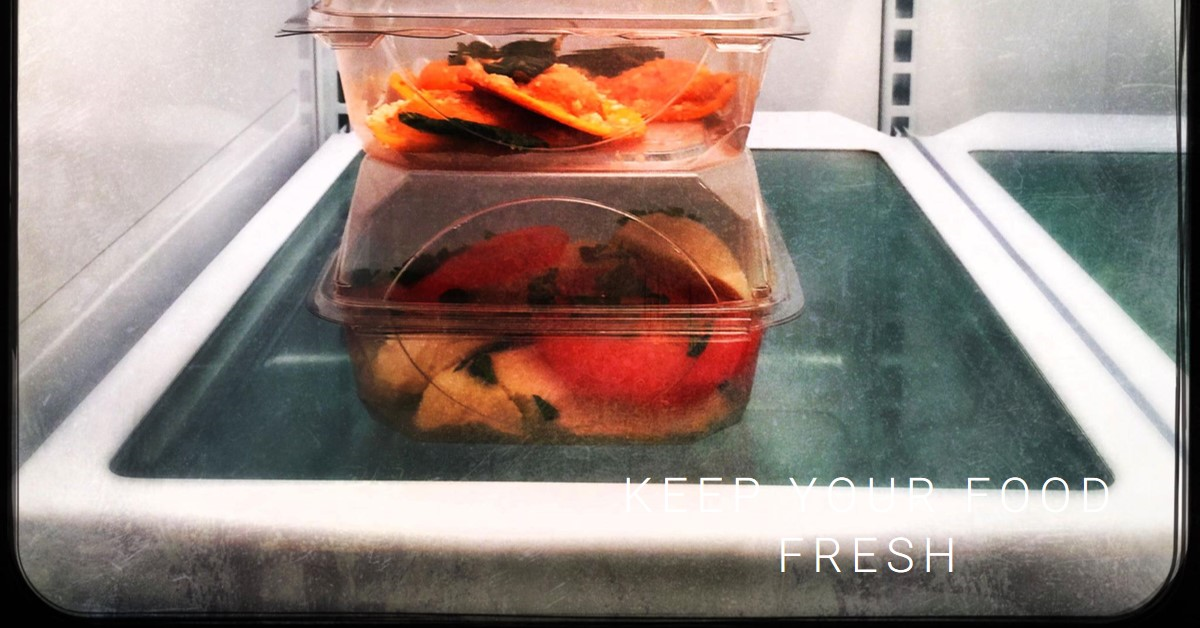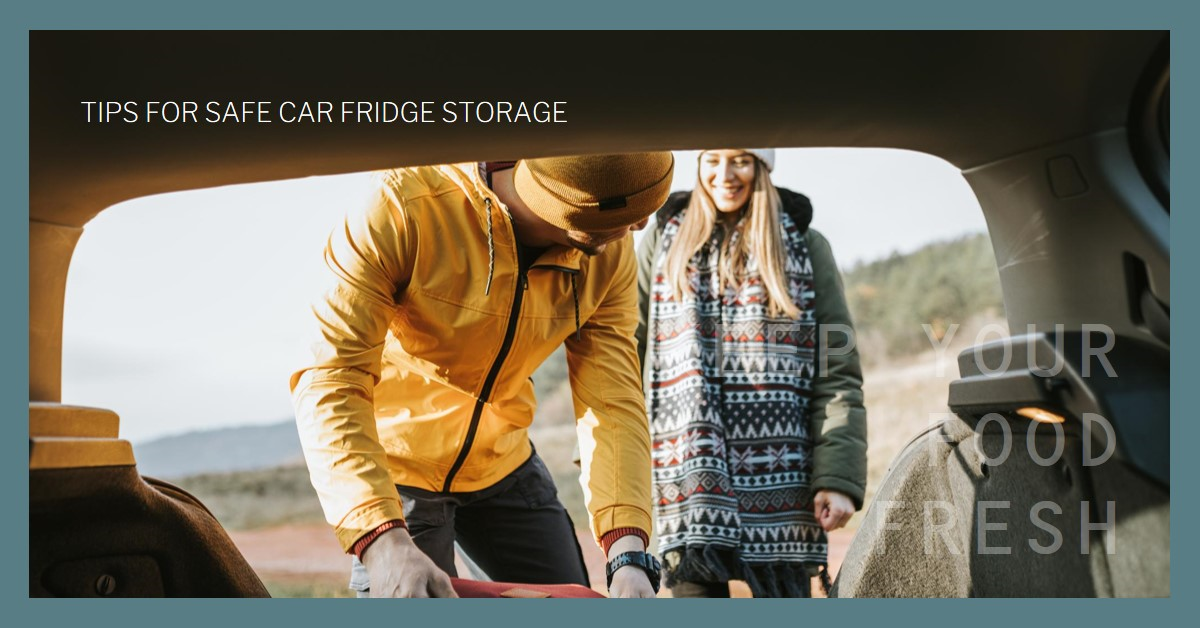Hitting the road with a car fridge opens a world of possibilities for your next adventure. But to ensure those fresh snacks and picnic delights stay safe to eat, you'll need to master the art of car fridge food storage. This guide combines temperature control best practices with smart packing strategies to keep your car fridge a haven for delicious and safe food.
Keeping Your Car Fridge in the Safe Zone
Finding the optimal temperature: Most car fridges have a thermostat for temperature control. The ideal range for safe food storage is between 3°C and 5°C (37°F and 41°F) according to the Delaware Department of Health and Social Services. This temperature range inhibits the growth of harmful bacteria that can cause foodborne illness.
Monitoring fridge temperature: Investing in a fridge thermometer is crucial. It allows you to double-check the internal temperature and ensure it stays consistently within the safe zone, regardless of the thermostat setting. This is especially important during long journeys or hot weather conditions.
External factors and fridge efficiency: Remember, extreme outside temperatures can affect your car fridge's ability to maintain a safe internal temperature. Parking in the shade and using reflective covers can help minimize external heat gain, allowing your car fridge to operate more efficiently.
Packing Smart for Safe and Fresh Food

Pre-chill everything: Pack pre-chilled food and drinks into your car fridge. This minimizes the time it takes for the fridge to reach the optimal temperature and keeps your food safe for consumption sooner. Pre-chilling also helps maintain a consistent internal temperature throughout your journey.
Strategic organization: Proper organization within your car fridge is essential to prevent food spoilage and contamination. Here's where the “Danger Zone” comes in:
- Store raw meat and poultry at the bottom shelf: This prevents drippings from contaminating other foods. Always store raw meat and poultry in sealed containers to avoid cross-contamination.
- Use sealed containers or leak-proof bags: Leftovers and opened packages should be stored in sealed containers or leak-proof bags. This prevents odours and the spread of bacteria that can cause foodborne illness.
Space management: Avoid overloading your car fridge, as air circulation is crucial for maintaining a consistent temperature. Overcrowding can hinder proper cooling and create temperature variations within the fridge, increasing the risk of spoilage.
Know your storage limits: Certain fruits and vegetables, like apples and bananas, release ethylene gas that can accelerate the spoilage of other produce. Be mindful of how long you plan to store certain items and plan accordingly. Here's a helpful resource from the NHS on storing food safely: NHS – Food Safety: https://www.nhs.uk/conditions/food-poisoning/causes/.
Food Handling for a Safe Journey
- Wash your hands: Always wash your hands thoroughly with soap and warm water before and after handling food. This simple step significantly reduces the risk of transferring harmful bacteria to your food. Consider packing hand sanitiser for situations when access to running water is limited.
- Maintain proper hygiene: Clean and sanitise all surfaces that will come into contact with food, including utensils, cutting boards, and storage containers, before packing them in your car fridge. Wiping down the car fridge interior with a mild disinfectant solution before each use is also recommended.
- Pack cooked food last: Pack cooked foods like leftovers after pre-chilled items like beverages and raw vegetables. This ensures cooked foods cool down quickly and reach the safe storage temperature faster.
- Thaw safely: Never thaw frozen food at room temperature in your car fridge. Thaw frozen food in the refrigerator at home before packing it for your trip. This prevents bacteria growth in the danger zone between 4°C and 60°C (40°F and 140°F).
Packing Tips to Maintain Cold Temperatures
- Freeze some water bottles: Pack a few frozen water bottles alongside your food items. As they thaw, they'll help maintain a cool environment within the fridge.
- Use insulated cooler bags: For extended trips, consider packing pre-chilled food items in insulated cooler bags before placing them in the car fridge. This provides an extra layer of insulation and helps maintain cold temperatures for longer durations.
Preventing Foodborne Illness While Travelling
By following these safe food handling and storage practices, you can significantly reduce the risk of foodborne illness while travelling.
Here are some additional tips:
- Plan your meals: Plan your meals in advance and prioritize foods with a longer shelf life at cooler temperatures.
- Avoid perishable items: Limit perishable items like dairy products, mayonnaise-based salads, and deli meats, especially on longer trips.
Food Storage Timelines
Not all foods are created equal when it comes to car fridge storage. Here's a handy table to help you determine safe storage times for different food categories at car fridge temperatures (3°C – 5°C):
| Food Category | Safe Storage Time |
|---|---|
| Fruits (apples, grapes, berries) | 3-5 days |
| Vegetables (carrots, peppers, leafy greens) | 3-5 days |
| Dairy products (milk, cheese) | 1-2 days |
| Cooked meats (sausages, leftovers) | 2-3 days |
| Raw meats (chicken, fish) | 1-2 days |
Dealing with Spoilage
While following these tips will help minimize spoilage, it's not always avoidable. Here's what to do if you encounter spoiled food while traveling:
- Identify the culprit: Isolate and remove any spoiled food items immediately to prevent contamination of other items.
- Dispose of it properly: Look for designated waste bins at campsites or rest stops. If unavailable, double bag the spoiled food and dispose of it in a general waste bin upon reaching your destination. Avoid leaving spoiled food in your car fridge or outside where it can attract pests.
Car Fridge Maintenance
Regular cleaning and maintenance are essential for optimal performance and longevity of your car fridge.
Here are some tips:
- Cleaning frequency: Clean the interior of your car fridge after every trip, or more frequently on extended journeys.
- Cleaning solution: Use a mild disinfectant solution or a mixture of warm water and baking soda to wipe down the interior surfaces.
- Maintaining the seal: Regularly inspect the car fridge door seal for any tears or cracks that might affect cooling efficiency. Consider replacing the seal if necessary, as instructed in the car fridge manual.
- Potential maintenance issues: Pay attention to any unusual noises or odours coming from your car fridge. These could indicate underlying issues requiring professional attention. Refer to the car fridge manual for troubleshooting tips or consult a qualified appliance repair technician if needed.
By following these comprehensive guidelines, you can transform your car fridge into a reliable haven for safe and delicious food on your next road trip adventure.
